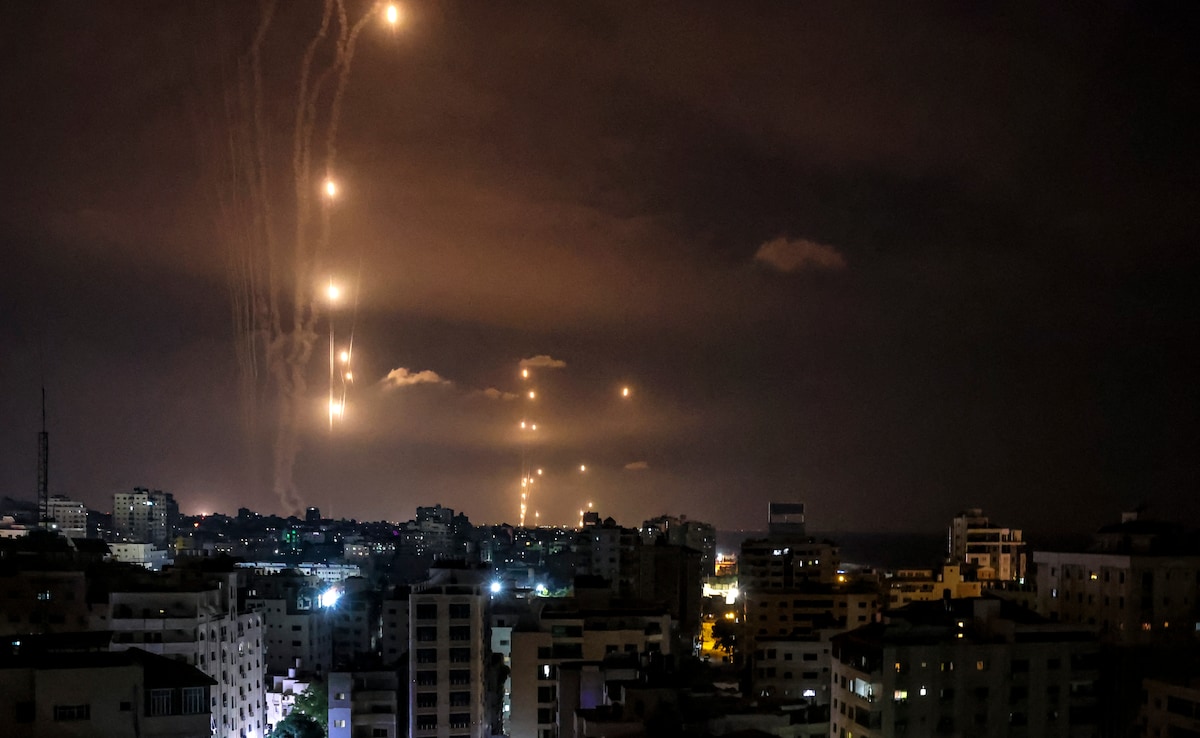
The air defence system has a range of approximately 70 km.
New Delhi:
Israel is at war following an unprecedented attack by the Hamas group. Over 5,000 rockets were fired towards Israel from the Hamas-controlled Gaza Strip in just 20 minutes after it declared Operation Al-Aqsa Flood.
Air raid sirens across Israel shattered the morning silence and the Iron Dome system, one of the best air defence systems in the world, was again in action. In dramatic visuals, the Iron Dome destroyed rockets mid-air and the sky was illuminated with bursts of flares. This time, however, the scale of the attack was unprecedented.
What is the Iron Dome system?
The Iron Dome system is a ground-to-air short-range air defence system deployed in several parts of the country to counter rocket attacks, mortars, artillery shells, and Unmanned Aerial Vehicles (UAVs) at short range.
The air defence system has a range of approximately 70 km and has three central components that form a unit, namely; Detection and Tracking radar, Battle Management and Weapons Control and the Missile Launcher armed with 20 Tamir Missiles.
The system has guarded Israel since 2011. During the 2006 Lebanon conflict, thousands of rockets were fired by Hezbollah and several northern areas including Haifa were attacked, killing many. The 2006 attacks prompted Israel to develop its own air defence system.
How Iron Dome Works?
When a rocket is fired toward Israel, the Detection and Tracking radar detects the incoming trajectory and relays the information to the weapons control system, which performs fast, complex calculations to detect the trajectory, speed and expected target of the rocket.
If the incoming rocket is directed towards a populated area or a strategic establishment, the launcher automatically fires the Tamir Missile and the rocket is destroyed mid-air to neutralize the threat. A single battery consists of three-four launchers and Israel has at least 10. The manufacturer of the Iron Dome system – Rafael Advanced Defence System claims it has a success rate of 90 per cent and has over 2,000 interceptions till now.
What Happened This Time?
The near-perfect air defence system found itself overpowered after a barrage of rockets from Hamas. For several years, the terrorist group, Hamas, has been trying to find a weakness in the Iron Dome system. They have been largely successful in doing so by overwhelming the system with a Salvo rocket attack (multiple rockets launched in a short span of time), making it difficult for the control system to intercept all targets. This time, over 5,000 rockets were launched in just 20 minutes.
Hamas is continuously developing its crude rocket technology and over the years it has increased its range to cover major cities of Israel including Tel Aviv and even Jerusalem.
A rocket launched by Hamas is much cheaper than the Tamir missile fired to intercept it. For Israel, the Iron Dome’s worth extends its cost analysis. It has proven itself in the past that it can neutralise targets and save lives.
During a conflict with Hamas in 2012, Israel claimed that 85 per cent of the 400 rockets fired from the Gaza Strip, toward civilian and strategic areas, were countered. During the 2006 Lebanon conflict over
During the 2014 conflict, over 4,500 rockets were fired by Hamas over several days. Over 800 were intercepted and around 735 were shot down, a success rate of 90 per cent.
Upgrade and 2021 Attacks
In 2021, Israel said it had upgraded the system to cope with additional aerial threats including successful interceptions of rocket and missile salvos as well as simultaneous interceptions of multiple unmanned aerial vehicles.
In May 2021, the two-week-long Israel-Palestine conflict, over 1,000 rockets were fired in the initial days and over 4,500 during the entire conflict. During the crisis, officials said the system showed a 90 per cent strike rate against rockets.




